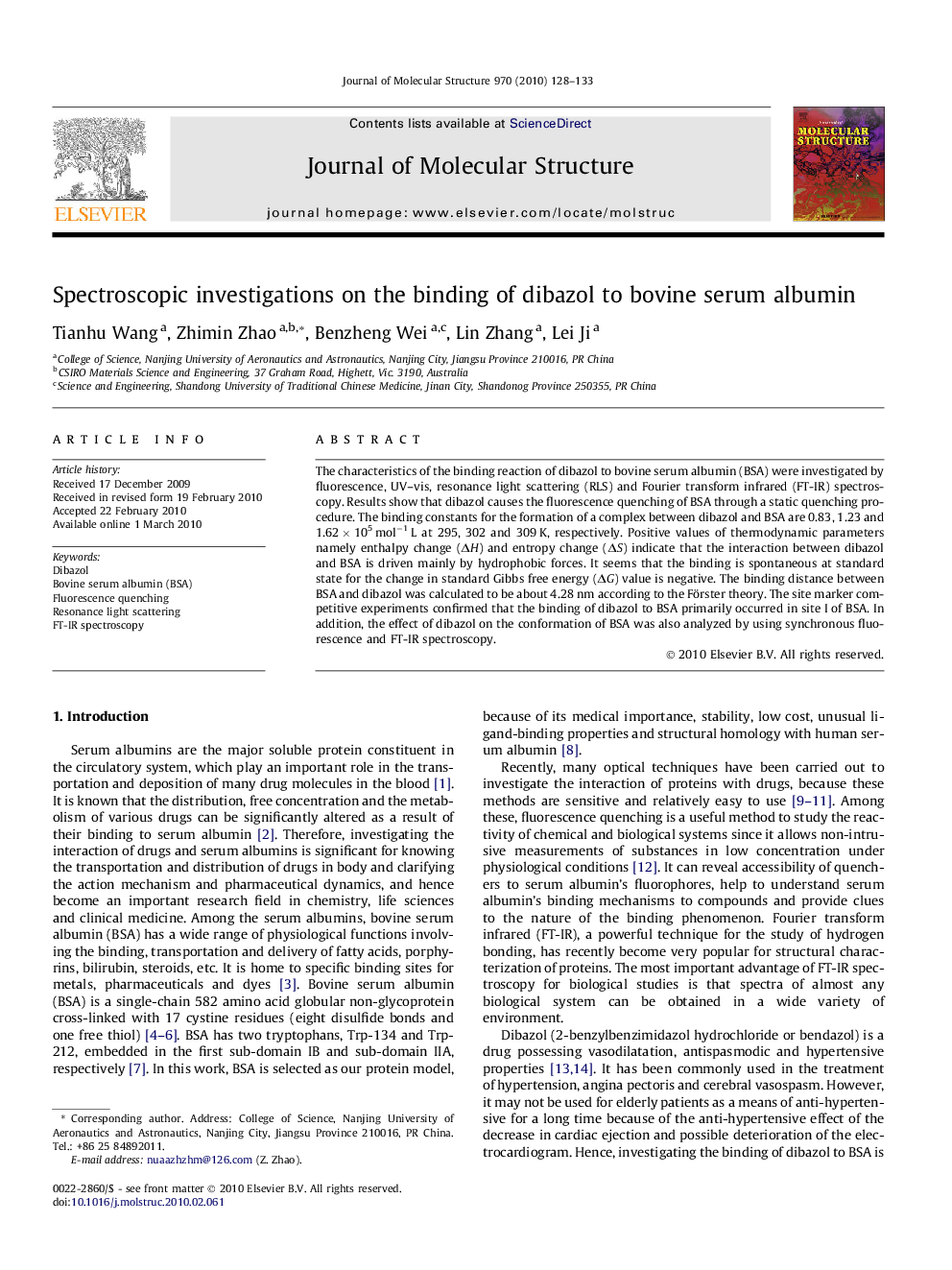| Article ID | Journal | Published Year | Pages | File Type |
|---|---|---|---|---|
| 1410021 | Journal of Molecular Structure | 2010 | 6 Pages |
The characteristics of the binding reaction of dibazol to bovine serum albumin (BSA) were investigated by fluorescence, UV–vis, resonance light scattering (RLS) and Fourier transform infrared (FT-IR) spectroscopy. Results show that dibazol causes the fluorescence quenching of BSA through a static quenching procedure. The binding constants for the formation of a complex between dibazol and BSA are 0.83, 1.23 and 1.62 × 105 mol−1 L at 295, 302 and 309 K, respectively. Positive values of thermodynamic parameters namely enthalpy change (ΔH) and entropy change (ΔS) indicate that the interaction between dibazol and BSA is driven mainly by hydrophobic forces. It seems that the binding is spontaneous at standard state for the change in standard Gibbs free energy (ΔG) value is negative. The binding distance between BSA and dibazol was calculated to be about 4.28 nm according to the Förster theory. The site marker competitive experiments confirmed that the binding of dibazol to BSA primarily occurred in site I of BSA. In addition, the effect of dibazol on the conformation of BSA was also analyzed by using synchronous fluorescence and FT-IR spectroscopy.
